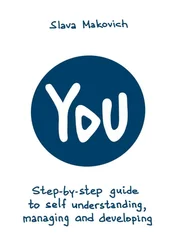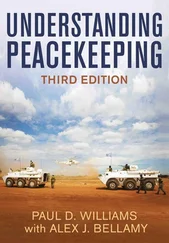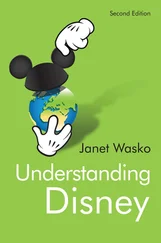Why the difference in prevalence rates of asexuality and homosexuality between these two national British samples? The difference likely occurred because the two samples varied in meaningful ways (Johnson et al., 2001). First, only sixteen- to forty-four-year-olds were recruited for NATSAL-II, whereas NATSAL-I had a broader range of ages, sixteen to fifty-nine. In my original study, I found that asexual people were more likely to be older rather than younger. Thus, the prevalence of asexuality may have been lower in NATSAL-II because it contained a restricted age range. Second, NATSAL-II participants, relative to NATSAL-I participants, may have been somewhat more sexually liberal in a variety of dimensions (e.g., attitudes, interests, and behavior). Thus, asexual people—who have, for example, less sexual experience relative to sexual people—may have been less extensively recruited to participate in NATSAL-II relative to NATSAL-I. Similarly, people with more liberal sexual attitudes and behavior, including gays and lesbians (who often have more sexual experience and are more liberal), may have been more extensively recruited in NATSAL-II relative to NATSAL-I. But is there evidence that NATSAL-II indeed surveyed more sexually liberal people than NATSAL-I? Yes, there is some. First, there was a ten-year span between recruitments for NATSAL-I and NATSAL-II, and sexual attitudes and behaviors often change across time, and usually in the more liberal direction. Second, there was a more extensive survey of greater London in NATSAL-II relative to NATSAL-I (see National Centre for Social Research et al., 2005), and urban people are often more liberal and sexually experienced relative to more rural people. However, the researchers did attempt to account for the greater recruitment of Londoners in NATSAL-II versus NATSAL-I using statistical methods (Bogaert, in press-a). Another consideration is that the method of assessment in NATSAL-II was likely more private than in NATSAL-I, and thus NATSAL-II participants may have been potentially more open to revealing sensitive information (e.g., same-sex attraction) (Copas et al., 2002).
How about societies beyond Britain? There is a representative sample of Australia with relevant information on sexual attraction, the Australian Study of Health and Relationships (ASHR). Like NATSAL-I, the ages surveyed were sixteen to fifty-nine, and the sexual orientation question allowed for the response “I never felt sexual attraction to anyone at all.” Approximately 0.4 percent reported never having felt sexual attraction to others, as compared to the 2 percent rate of same-sex attraction in this sample (again, same-sex and bisexual attraction combined) (Smith, Rissel, Richters, Grulich, & de Visser, 2003).
In addition to the NATSAL studies in Britain and this national sample of Australia, there are important data on sexual attraction (or the lack of it) in the U.S.-based National Survey of Family Growth (NSFG) (Mosher, Chandra, & Jones, 2005; Poston & Baumle, 2010), also a national sample. When asked about their sexual attractions (to men, women, or both), 0.8 percent of female participants and 0.7 percent of male participants reported that they were “not sure.” This is in contrast to 1.5 percent of female participants who reported predominant or exclusive attraction to women and 1.9 percent who reported equal sexual attraction to both sexes, and also in contrast to 2.2 percent of male participants who reported predominant or exclusive attraction to men and 1 percent who reported equal sexual attraction to both sexes. Assuming that “not sure” is a reasonable proxy for a lack of sexual attraction, these figures should be considered as “in-between” the prevalence rate of asexuality that I reported in the NATSAL samples (Bogaert, 2004; Bogaert, in press-a). However, “not sure” is a vague answer and could mean, at least for some, something beyond a lack of sexual attraction for others. Also, like NATSAL-II, the age range was restricted in NSFG, in this case to only those between fifteen and forty-four.
Some national surveys have also included information on low or absent sexual desire. Low or absent desire is not completely overlapping with a lack of sexual attraction—my preferred definition of asexuality—but it is clearly related, particularly in the case of absent desire, and may serve as a good proxy for lack of sexual attraction, especially when no specific information was collected on sexual attraction. Moreover, the absence of desire is an alternative way to define asexuality (see chapter 2 on definitions of asexuality) (Prause & Graham, 2007). Thus, figures on low/absent desire should also give us pause about the true number of “asexuals,” broadly defined. Using a national survey of Danish residents, Soren Ventegodt (1998) found that 11.2 percent of women and 3.2 percent of men had “low sexual desire.” In one of the best sex survey samples from the United States, the National Health and Social Life Survey (NHSLS), Laumann and colleagues found that approximately one-third of women and one-seventh of men had “low desire” in the past year (Laumann, Paik, & Rosen, 1999). In a recent national sample of China, 7 percent of participants reported “no” desire for a year or more (Parish et al., 2003; Parish et al., 2006; Parish et al., 2007; Bogaert, 2008).
Although these studies are interesting, it should be noted that in two of the studies (those by Ventegodt and Laumann and his colleagues), low desire is not necessarily the same as absence of desire. Also, it is important to consider the time frame in these studies, as it is unclear whether these individuals would report low or even absent desire over many years. I think it is reasonable, after all, to define asexuality as a relatively long-term, or stable, characteristic (see chapter 2 on definitions).
There has never been a national survey assessing an asexual “identity.” However, there are intriguing sexual identification data from the U.S.-based National Survey of Family Growth, mentioned above (Mosher et al., 2005; Poston & Baumle, 2010). Like in many large-scale surveys, the respondents were asked to define their sexual orientation. In addition to the option of endorsing one of the three traditional categories of sexual orientation—heterosexual, homosexual, bisexual—the respondents could choose “something else.” Among female participants, 1.3 percent identified as homosexual and 2.8 percent identified as bisexual, while 2.3 percent of male participants identified as homosexual and 1.8 percent identified as bisexual. Interestingly, a mighty minority (3.9 percent) of participants (combined male and female) chose “something else” as their sexual orientation. A further 1.8 percent did not endorse any of the categories offered to them (i.e., heterosexual, homosexual, bisexual, or “something else”). These figures may represent an important piece of the prevalence puzzle of asexuality. However, it is also important to bear in mind that “something else” (or a nonresponse) is vague, and using “identification” is problematic if one wants a relatively conceptually clean definition of sexual orientation that would also encompass an asexual orientation (see also chapter 2).
Now let’s consider a general issue that may affect the reporting rate of asexuality, regardless of how it is defined. This issue is volunteer bias , and it is related to an issue mentioned above: people who choose to participate in sex studies (relative to those who choose not to) are more liberal in their sex attitudes, more interested in sex, and have more sexual experience (e.g., Bogaert, 1996; Morokoff, 1986; Saunders, Fisher, Hewitt, & Clayton, 1985). This issue is called volunteer bias because there is bias in favor of recruiting certain types of participants over others in human research studies. Volunteer bias is a potential problem in all human studies, but it has been argued to be especially problematic in studies of sexuality, which, as mentioned previously, seem prone to over-sample sexually liberal people. If so, the rate of asexuality may be higher than reported in sexual surveys, because people with less liberal sexual attitudes/behavior often decline to participate in such surveys. This is even true in the best studies we have: national probability samples, such as NATSAL-I and NATSAL-II. For example, the so-called refusal rate—those who were contacted to participate but chose not to—in NATSAL-I was about 30 percent; in NATSAL-II, it was even slightly higher (around 35 percent). Thus, a high number of asexual people may not have agreed to participate in past sexual surveys because they were uninterested in or uncomfortable with the subject matter of these surveys: sex. A sex survey? Why on earth would I want to do that? It is a bit like getting a call from the Professional Golfers Association wanting to talk about your favorite courses, your handicap, the type of clubs you use, and your preferred brand of ball, and you declining to participate because you don’t play and, frankly, don’t want to start playing . What! You don’t want to talk intimately about golf for an hour? (I use this as an example because I am a golfer but have, over the years, somewhat reluctantly come to terms with the fact that the game is, evidently, not of interest to everyone.)
Читать дальше












